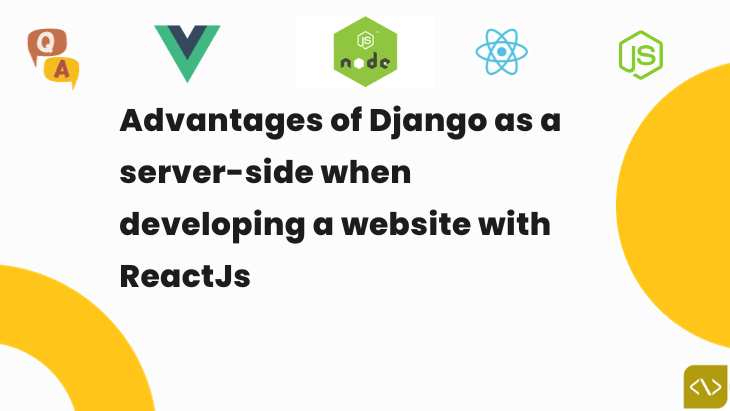
Advantages of Django as a server-side when developing a website with React
----------------------------------------------
Django is a high-level web framework for building server-side applications, while React is a JavaScript library for building user interfaces. When developing a website with React, you can use Django as the server-side component to handle various backend functionalities. Here are some advantages of using Django in conjunction with React:
-
Full-Stack Development: Django is a full-stack web framework that provides a comprehensive set of tools and features for server-side development. When paired with React, which handles the frontend, you can create end-to-end web applications.
-
Rich Ecosystem: Django offers a wide range of built-in features, including authentication, ORM (Object-Relational Mapping), routing, form handling, and more. You can leverage these features to build robust and secure web applications more quickly.
-
Authentication and Authorization: Django provides a secure and flexible authentication system. You can easily integrate user registration, login, and user management into your React application. It also supports fine-grained access control through permissions and groups.
-
ORM and Database Abstraction: Django's ORM allows you to define your data models in Python, making it easier to interact with the database. This abstraction simplifies database operations, data validation, and migration management.
-
Admin Interface: Django includes an automatic admin interface that allows you to manage your application's data models, users, and content. You can customize the admin interface to suit your project's needs.
-
RESTful API Development: Django makes it straightforward to create RESTful APIs using libraries like Django REST framework. This is useful when you need to expose your application's data to the React frontend, enabling seamless data communication.
-
Built-In Security Features: Django is designed with security in mind and includes features such as cross-site scripting (XSS) and cross-site request forgery (CSRF) protection. This helps safeguard your application from common web security threats.
-
URL Routing and View Handling: Django's URL routing system allows you to define URL patterns and associate them with views, making it easier to create clean, organized, and maintainable URLs for your web application.
-
Caching and Performance Optimization: Django provides caching mechanisms that help improve the performance of your application by reducing database queries and response times. This is particularly beneficial for React applications, which often rely on data fetched from the server.
-
Community and Ecosystem: Django has a strong and active community that contributes to a rich ecosystem of packages and extensions. You can find a wide range of third-party packages to extend Django's functionality and address specific needs.
-
Scalability: Django is designed to scale, allowing you to handle larger and more complex web applications. You can use techniques like load balancing, caching, and database optimization to scale your Django backend as your application grows.
-
Documentation and Learning Resources: Django offers extensive documentation and a wealth of learning resources, making it accessible for developers at all skill levels. This makes it easier for React developers to transition into full-stack development with Django.
In summary, using Django as the server-side component in combination with React for the frontend can result in a powerful and efficient web development stack. Django's robust features and security mechanisms complement React's capabilities for creating dynamic and interactive user interfaces. This combination allows developers to build sophisticated web applications that are secure, maintainable, and scalable.
Categories: ReactJs Tags: #Javascript, #ReactJs,
